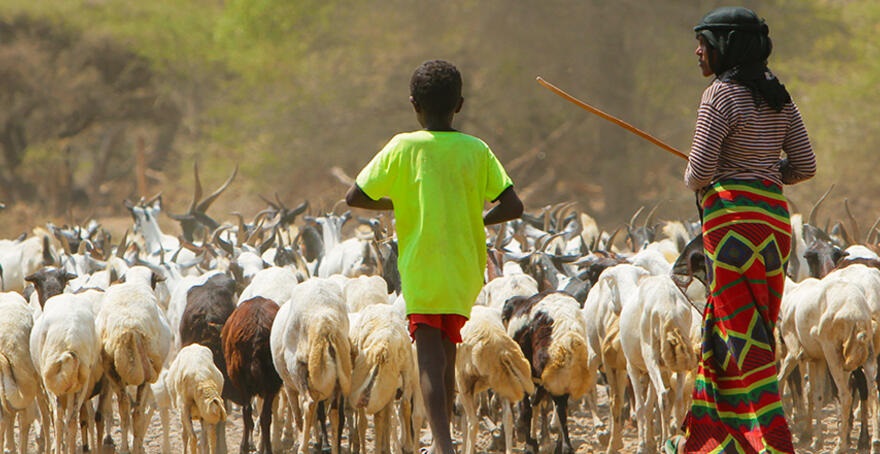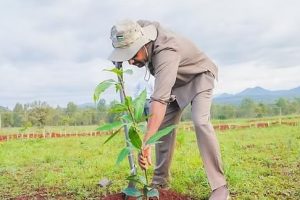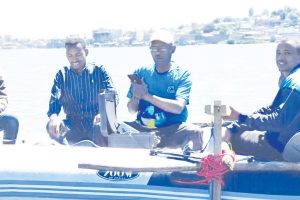
The terms “highlands” and “lowlands” are loosely defined: “highlands” as synonymous with “mountains” while “lowlands” as those areas beyond and beneath the mountains that are influenced by down-slope physical processes and by human relationships linking the two.
According to World Bank, the lowlands are described by a high concentration of ethnic minority groups, regular conflict, and low population density. A significant portion of the population still maintains a nomadic or semi-nomadic, agro-pastoral way of life, and population dynamics in the region are not well understood. Lowland grazing systems are thought to contribute 35 percent of red meat and 56 percent of milk to Ethiopia’s livestock sector GDP.
Pastoralism is the dominant livelihood in these arid and semi-arid areas. Hence, “pastoral regions” are often synonymous with ‘lowlands’ in many literatures in the field. Pastoralism may be thought of as a system: a range of livestock and non-livestock activities connected through a web of social and economic relationships that extend well beyond lowland areas to highland economies and across the nation’s borders.
Pastoralism is not only the way of life for pastoralists but also a culture, symbol of love and integration, economic and livelihood system, one of the basic pastoral risk management strategies, and rational use of drylands in Ethiopia. It is a way of life-based on raising livestock, particularly cattle, small ruminants, and camels. Pastoral systems are important to many people in Africa’s vast arid and semi-arid areas where the availability of rainfall is unpredictable and erratic.
In Ethiopia, arid and semi-arid areas a significant number of pastoralists led their life wondering here and there. There are several factors that forced pastoralists to leave their place which include economic, political, demographic, and environmental factors that force locals. Besides, uncertain climatic conditions reduced access to grazing land and water, and reduced mobility affect the sustainability of livestock systems in Ethiopia.
Taking their population number and the space they occupy, the 1995 Ethiopian Constitution explained that: pastoralists have the right to free land grazing, fair use of natural resources, to have market access and receive fair prices, and not to be displaced from their own lands without their wish. The government also has prepared a national policy and strategies to direct development efforts in the pastoral areas of Ethiopia.
Although, these people are given rights and special attention under the Ethiopian constitutions, neither the people nor the nation have benefited from the resource potential of lowland areas. Particularly, people who live in the low lands of Ethiopia have faced environmental problems due to lack of rainfall which forced them to move from place to place in search of water and grazing land for their animals.
Cognizant of this, Ethiopia has started the application of cloud seeding technology which has a positive impact for Ethiopian low landers including pastoralist. This is because the life of the pastoralist is highly related to animal breeding and husbandry. They move from place to place in search of grazing lands and water for their animals.
The government, following the mid-2018 reform, has been working to address issues that concern the low landers. In his address to the House of Peoples Representative on March 23, 2021, Ethiopian Prime Minister Abiy Ahmed announced the realization of technology of converting clouds into rains in the country. Due to the increase in population and demand for agricultural land, technology is very important for Ethiopia to make the dry areas fertile and productive.
“Ethiopia has started cloud seeding technology. This technology is important to plant seedlings and other environmental works in the areas where rainfall shortages occur. Cloud seeding technology means a lot to farmers, especially pastoralists since rain helps to make cattle feed easier. It is, therefore, important technology which Ethiopia must use widely used”, Abiy said.
Furthermore, the government, to realize a suitable life for lowlanders, has made several efforts to change the life of lowlanders. Especially, the newly formed government of Ethiopia has given due emphasis to lowlanders and has dedicated a Ministry for them: Ministry of Irrigation and Lowland.
Ethiopian Meat and Dairy Industry Development Institute Deputy Director Tariku Teka told The Ethiopian Herald that establishing Ministry for lowlanders is right and proper that the government pay attention to the people and the areas. Low land and lowlanders have covered 60 percent of the nation’s land coverage. The place is highly endowed with natural resources such as underground water, a vast land with small populations, livestock, and so on.
For example, 70 percent of the human population with a significant percent of the nation’s livestock have been found in the highlands of Ethiopia. Nevertheless, this area alone does not produce surplus production let alone exports. Government special attention, therefore, will not only ensure the country’s food security but also increase its export, he added.
Regarding animal farming, 90 percent of the county’s livestock and meat product exports have been coming from the lowland area of the nation. The animal species of the lowlands have natural instinct behavior. Borena cattle, for example, are a global brand. They are the ones that have been able to withstand drought and are being improved in name of United States Borena and Australia Borena. Besides, sheep and goats in Afar and Somali are not only resistant to drought and disease but are also overweight, increase productivity and export highly. They help to modernize meat and milk products and production.
The government has the political will to change the life of lowlanders. This political will has been expressed via cloud seeding, and establishing Ministry to low landers. Establishing Ministry and giving attention to the lowlands of Ethiopia are appreciable since it helps to understand the lowlander’s problems from the bottom up. Along with the government efforts and commitments, the Ministry is expected to solve problems related to pastoralist life such as a lack of market accessibility and information, land competition, lack of agricultural inputs, and presence of agricultural pests were also mentioned as hindering crop production.
BY EPHREM ANDARGACHEW
THE ETHIOPIAN HERALD OCTOBER 15/2021





